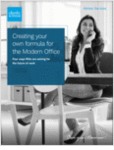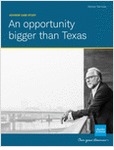After the Department of Labor’s 2016 fiduciary rule and best interest contract exemption were vacated, the standard reverted back to the “old” five-part test that has historically been used to determine investment advice fiduciary status.
Now, it is widely expected that the DOL will release a newly revised fiduciary test before the end of the summer. Many expect that the Biden-era DOL will release a version of the fiduciary test that more closely resembles the Obama-era fiduciary test.
We asked two professors and authors of ALM’s Tax Facts with opposing political viewpoints to share their opinions about whether the DOL should revamp the investment advice fiduciary rule to adhere more closely to the 2016-era fiduciary standard.
Below is a summary of the debate that ensued between the two professors.
Their Votes:
 Bloink
Bloink
 Byrnes
Byrnes
Their Reasons:
Bloink: The 2016 fiduciary rule offered the types of strong protections against conflicted advice that Americans so desperately need. It created a clear-cut standard that advisors could follow to avoid liability, and we should revert to that standard.
Byrnes: The 2016 fiduciary standard should not be brought back to life. Studies conducted in the near-decade since the rule was first introduced have shown that the stringent rule resulted in more investment advice professionals being classified as fiduciaries — and that actually hurt lower- and middle-income Americans.
Rather than creating a regime where consumers benefited from stronger protections, the more stringent fiduciary standard resulted in a situation where these Americans were unable to access the investment advice they needed.
Bloink: In addition to the strong protection offered by the Obama-era rule, from a practical standpoint, most investment advisory firms had already taken significant steps to comply with the Obama-era rule — meaning that the cost of reimplementing the rule today would be much less significant than if the DOL were to unveil an entirely new rule.








 August 27, 2023 at 10:21 AM
August 27, 2023 at 10:21 AM












 Copyright © 2024 ALM Global, LLC. All Rights Reserved.
Copyright © 2024 ALM Global, LLC. All Rights Reserved.